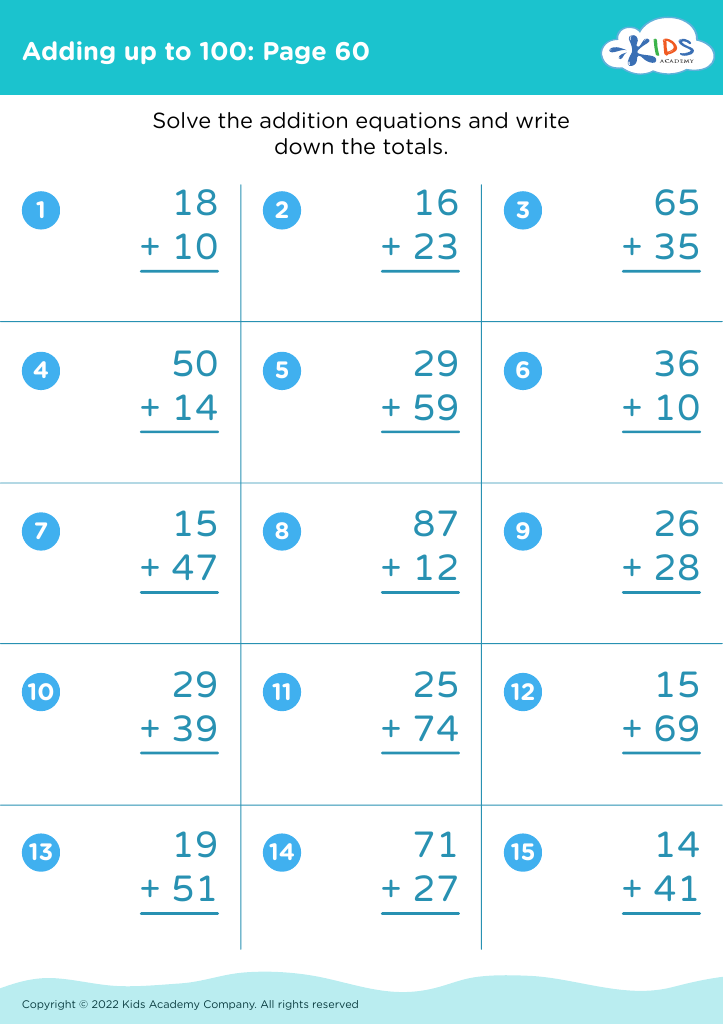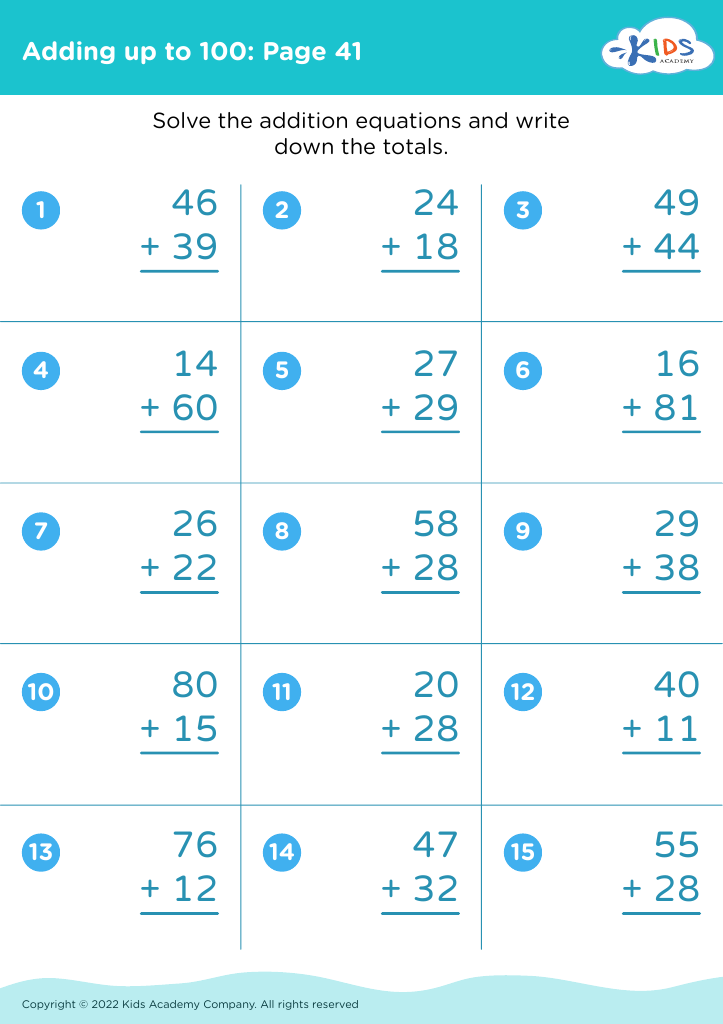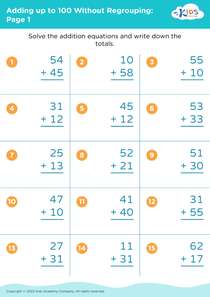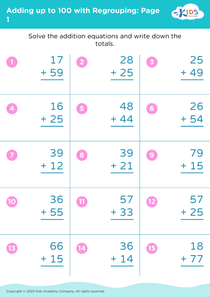Recognizing Patterns Adding up to 100 Misc Worksheets for Ages 4-8
3 filtered results
-
From - To
Explore our "Recognizing Patterns Adding up to 100 Misc Worksheets" designed for children ages 4-8! These engaging worksheets are perfect for helping young learners identify and understand numerical patterns while building their addition skills. Each activity is thoughtfully crafted to make math fun and interactive, encouraging children to recognize sequences and relationships within numbers. As they work through these colorful and stimulating exercises, kids will develop a solid foundation in math that will benefit them in future learning. Ideal for classroom use or at-home practice, our worksheets provide a comprehensive approach to mastering patterns and addition up to 100!
Recognizing patterns and effectively adding up to 100 are critical skills for children aged 4 to 8, forming the foundation of mathematical understanding. Engaging in activities that promote these skills can enhance children's cognitive development, paving the way for stronger problem-solving abilities and better logical reasoning.
Parents and teachers should care about this because mastery of these concepts not only aids in mathematics but also assists in literacy and critical thinking. Recognizing patterns helps children to identify relationships and predict outcomes, which are essential skills for learning across subjects. Similarly, the ability to add up to 100 enables children to understand larger numbers and arithmetic operations, crucial for their academic progression.
Furthermore, when children grasp these concepts early on, they build confidence in their abilities. This self-assuredness can foster a positive attitude towards learning and inspire curiosity. By nurturing these skills in a supportive environment, parents and teachers can help children develop a lifelong love for learning, empowering them to tackle more complex mathematical concepts in the future. Ultimately, acknowledging the importance of recognizing patterns and numerical comprehension lays the groundwork for their academic success and prepares them for a world increasingly driven by data and trends.














